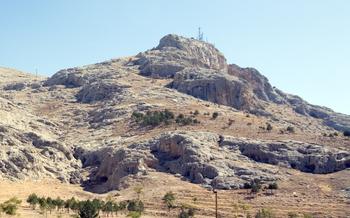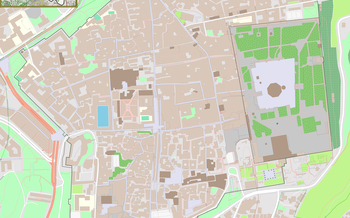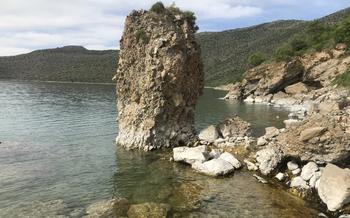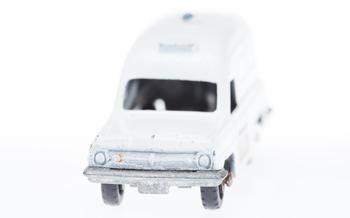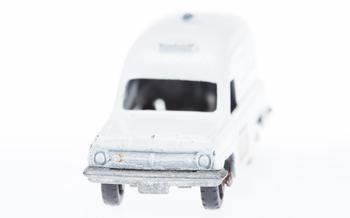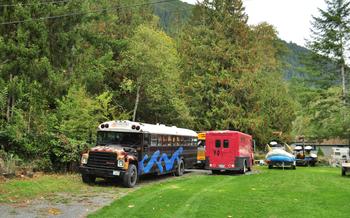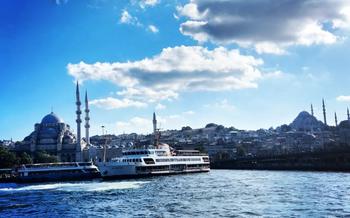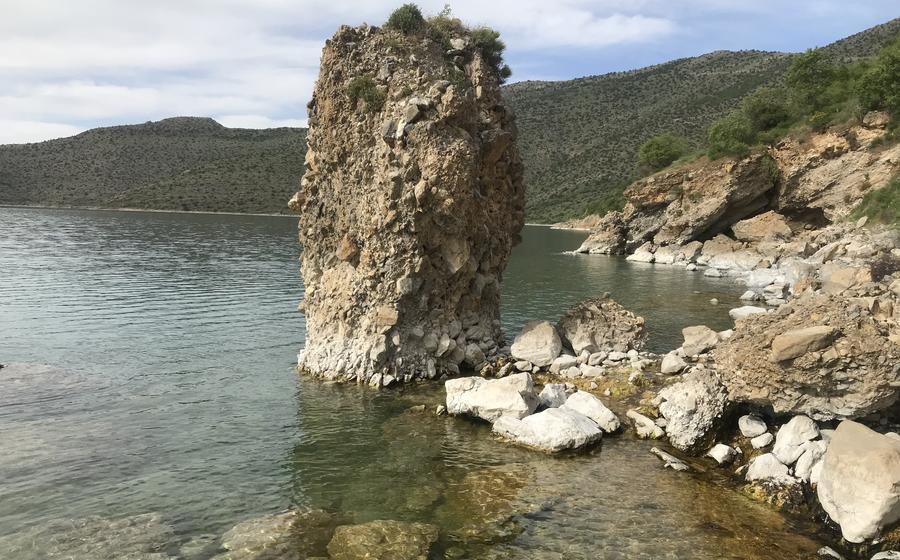
Qerqeez Church
- Explore the Historic Qerqeez Church in Van, Turkey
- Architectural Features
- Religious Significance
- Cultural Importance
- Restoration and Preservation
- Visiting the Church
- Photography and Videography
- Local Cuisine
- Accommodation Options
- Transportation
- Nearby Attractions
- Festivals and Events
- Weather and Climate
- Language and Communication
- Insider Tip: Embark on a Sunrise Pilgrimage
Explore the Historic Qerqeez Church in Van, Turkey
The Qerqeez Church, a hidden gem nestled in the picturesque city of Van, holds immense historical and religious significance. Built in the 5th century AD, the church stands as a testament to the rich Armenian heritage of the region. Its unique architectural features, including intricate carvings and frescoes, reflect the artistry and devotion of its ancient builders. The church's location, perched atop a hill overlooking the serene Lake Van, adds to its mystical charm. Legends and historical accounts intertwine to create a captivating narrative surrounding the Qerqeez Church, making it a must-visit destination for history buffs and pilgrims alike.
Architectural Features
The Qerqeez Church stands out for its distinctive architectural style, a blend of Armenian and Byzantine influences. Constructed using local materials and traditional techniques, the church showcases the skill and artistry of its builders. Its rectangular plan features a nave, apse, and narthex, each with unique characteristics. The nave, the main body of the church, is spacious and adorned with intricate carvings and frescoes depicting religious scenes. The apse, the semi-circular sanctuary at the eastern end, houses the altar and is decorated with colorful mosaics and stained-glass windows. The narthex, the entrance vestibule, provides a transition space between the exterior and the interior of the church, featuring decorative arches and columns. Overall, the Qerqeez Church's architectural elements harmoniously blend to create a sacred and awe-inspiring space.
Religious Significance
The Qerqeez Church holds immense religious significance as a place of worship for the Armenian Apostolic Church, one of the oldest Christian denominations. It serves as a spiritual center for the local Armenian community, fostering a deep connection between the church and its congregation. Throughout history, the church has been a witness to countless religious ceremonies, baptisms, weddings, and funerals, playing a pivotal role in the spiritual lives of its devoted followers. The presence of relics and sacred objects further enhances the church's religious significance, attracting pilgrims and visitors who seek spiritual enlightenment and a connection to the divine.
Cultural Importance
The Qerqeez Church holds immense cultural significance as a symbol of Armenian heritage in the region. For centuries, the church has served as a spiritual and cultural center for the local Armenian community. It represents the rich history and traditions of the Armenian people and their enduring presence in Van.
The church's intricate architecture, with its distinctive Armenian style, showcases the artistic and cultural achievements of the Armenian community. The interior of the church is adorned with beautiful frescoes and carvings that depict biblical scenes and Armenian cultural motifs. These artworks provide a glimpse into the vibrant artistic traditions of the region and serve as a reminder of the rich cultural heritage of the Armenian people.
The Qerqeez Church plays a vital role in preserving and promoting Armenian culture and identity. It serves as a venue for various cultural events, including religious ceremonies, festivals, and exhibitions. These events bring together the Armenian community and provide a platform for showcasing Armenian culture, music, dance, and cuisine.
Moreover, the church serves as a gathering place for the local Armenian community, fostering a sense of unity and belonging. It is a place where Armenians can come together to celebrate their shared heritage, traditions, and faith. The church's presence in Van is a testament to the resilience and cultural vitality of the Armenian people.
Restoration and Preservation
The Qerqeez Church has undergone several restoration and preservation efforts to maintain its historical and architectural integrity. In the early 20th century, the church faced significant damage due to neglect and natural disasters. In the 1960s, the Turkish government initiated a major restoration project that involved repairing structural damage, restoring the church's original features, and conserving its unique frescoes and mosaics. The project aimed to preserve the church's historical significance and ensure its longevity for future generations.
In recent years, the Armenian community has played a vital role in preserving the church's cultural and religious heritage. Through fundraising initiatives and collaboration with local authorities, they have undertaken restoration projects to address ongoing issues such as water damage, stone decay, and the preservation of delicate artwork. These efforts have helped to safeguard the church's authenticity and ensure that it remains a symbol of Armenian heritage for generations to come.
Visiting the Church
Visiting the Qerqeez Church is a truly enriching experience that allows visitors to delve into its historical, architectural, and religious significance.
Photography and Videography
The Qerqeez Church offers ample opportunities for photography and videography enthusiasts. The church's unique architecture, intricate carvings, and vibrant frescoes provide a stunning backdrop for capturing memorable shots. Visitors are welcome to take photographs and videos for personal use, but it's important to be respectful of the religious nature of the site.
For the best photography results, plan your visit during the golden hours of sunrise or sunset, when the warm light enhances the church's beauty. Tripods are allowed, but using flash photography inside the church is generally discouraged to preserve the integrity of the artwork.
If you're interested in capturing the essence of the church's spiritual significance, consider attending a religious service or event. The vibrant colors of the Armenian Apostolic liturgy, coupled with the melodious chanting and the devotion of the faithful, create a truly captivating atmosphere.
For those interested in learning more about photography or videography at the Qerqeez Church, guided tours and workshops are occasionally organized by local photography enthusiasts. These tours offer insights into the best angles, lighting conditions, and techniques for capturing the beauty of the church and its surroundings.
Local Cuisine
Van offers a diverse culinary scene influenced by its rich history and cultural heritage. Visitors can indulge in traditional Turkish dishes and unique regional specialties. Here are some suggestions for exploring the local cuisine:
-
Van Kahvaltısı (Van Breakfast): Start your day with a hearty Van breakfast, featuring fresh local ingredients such as honey, cheese, olives, and homemade bread.
-
Murtuğa: This traditional dish is made with tender lamb or beef cooked in a clay pot with vegetables and spices.
-
İslık Köfte: These unique meatballs are made with bulgur, spices, and minced meat, and are grilled to perfection.
-
Ayran Aşı: A refreshing soup made with yogurt, rice, and fresh herbs, perfect for a light meal or as a side dish.
-
Van Kavurma: A flavorful stew made with slow-cooked lamb or beef, vegetables, and spices.
-
Van Balığı: The local trout, known as Van Balığı, is a delicacy and can be enjoyed grilled, fried, or smoked.
-
Şor Aşı: A hearty soup made with lentils, cracked wheat, and vegetables, often served with a dollop of yogurt.
-
Kürt Börek: Layers of thin dough filled with cheese, meat, or vegetables, baked to a golden brown.
-
Van Dondurması: Don't miss the famous Van dondurması, a unique ice cream known for its elasticity and rich flavor.
-
Armenian Cuisine: Van is home to a significant Armenian community, and visitors can find authentic Armenian restaurants serving dishes such as dolma, kufta, and lahmacun.
For vegetarians and vegans, there are plenty of options available, such as vegetable kebabs, lentil soups, and salads made with fresh local produce.
When looking for places to eat, consider trying local restaurants or cafes to experience the authentic flavors of Van. Ask your hotel or tour guide for recommendations, or explore the side streets and markets to find hidden culinary gems.
Accommodation Options
When planning your visit to the Qerqeez Church, finding a comfortable and convenient place to stay is essential. Van offers a range of accommodation options to suit different budgets and preferences, ensuring a memorable stay.
For those seeking a luxurious experience, the Van Elite World Hotel is an excellent choice. Located in the heart of the city, this 5-star hotel offers elegant rooms with modern amenities, a spa, and a rooftop pool with panoramic views of Van Lake.
For a more affordable option, the Ramada by Wyndham Van is a reliable choice. Situated just a short walk from the Qerqeez Church, this hotel provides comfortable rooms, a fitness center, and a complimentary breakfast.
For a unique and authentic experience, consider staying at a traditional Armenian guesthouse. These guesthouses often offer cozy rooms with traditional decor, allowing guests to immerse themselves in the local culture.
If you prefer a home-away-from-home experience, Airbnb and other vacation rental platforms offer a range of apartments and houses for rent in Van. This option provides more flexibility and privacy, especially for families or larger groups.
No matter your budget or preferences, Van has a variety of accommodation options to ensure a comfortable and enjoyable stay during your visit to the Qerqeez Church.
Transportation
Reaching the Qerqeez Church from major cities in Turkey is relatively straightforward. There are several transportation options available, depending on your preferences and budget.
By Bus:
Buses are a popular and affordable mode of transportation in Turkey. From cities like Istanbul, Ankara, or Izmir, you can take overnight buses that arrive in Van early in the morning. The journey typically takes around 12-15 hours, and tickets can be purchased online or at bus stations.
By Train:
Train travel is another option, offering a more scenic and leisurely experience. There are direct trains from Istanbul to Van, which take approximately 30-35 hours. The train journey passes through beautiful landscapes, including the Taurus Mountains and Lake Van.
By Rental Car:
Renting a car allows you to explore the region at your own pace and provides the flexibility to visit other nearby attractions. Several car rental companies operate in Van, and you can pick up your vehicle at the airport or in the city center. Keep in mind that driving in Turkey can be challenging due to busy traffic and unfamiliar road conditions.
Cost and Duration:
The cost and duration of travel to the Qerqeez Church vary depending on your starting point and chosen transportation method. Here are approximate estimates:
- From Istanbul: Bus (12-15 hours, 100-150 TL), Train (30-35 hours, 150-200 TL), Flight (2 hours, 300-400 TL)
- From Ankara: Bus (10-12 hours, 80-120 TL), Train (25-30 hours, 120-150 TL), Flight (1 hour, 250-350 TL)
- From Izmir: Bus (15-18 hours, 120-180 TL), Train (35-40 hours, 180-250 TL), Flight (2 hours, 350-450 TL)
Scenic Drives:
If you choose to rent a car, consider taking the scenic route along the shores of Lake Van. The drive offers stunning views of the lake, mountains, and picturesque villages. You can stop at various points along the way to explore historical sites, natural wonders, or simply enjoy the scenery.
Nearby Attractions
In addition to the Qerqeez Church, Van offers a wealth of other attractions that showcase its rich history, stunning natural beauty, and vibrant culture. Here are a few nearby places that visitors should consider exploring:
-
Van Castle: This ancient fortress, perched atop a hill overlooking the city, offers breathtaking panoramic views of the surrounding landscape. Explore its well-preserved fortifications, towers, and courtyards, and immerse yourself in the stories of past battles and sieges.
-
Lake Van: Turkey's largest lake, Lake Van is a natural wonder that boasts crystal-clear waters, picturesque islands, and stunning sunsets. Take a boat tour to Akdamar Island, home to the beautiful Armenian Church of the Holy Cross, or simply relax on the shores and enjoy the tranquil beauty of this natural marvel.
-
Van Museum: Delve into the region's rich history and culture at the Van Museum. Its impressive collection includes artifacts from ancient civilizations, including the famous Urartu Kingdom, as well as exhibits on local customs, traditions, and contemporary art.
-
Hosap Castle: Located about 50 kilometers from Van, Hosap Castle is an impressive medieval fortress that once guarded the strategic trade routes of the region. Explore its massive walls, towers, and underground chambers, and admire the stunning views of the surrounding countryside.
-
Muradiye Waterfall: Just a short drive from Van, Muradiye Waterfall is a natural spectacle that cascades down a rocky cliff, creating a mesmerizing sight and sound. Take a leisurely walk along the scenic hiking trails that lead to the waterfall, and enjoy the refreshing mist and stunning views.
Festivals and Events
Van is a vibrant city that hosts various festivals and events throughout the year, showcasing its rich culture, history, and traditions. One of the most notable events is the Van Lake Festival, held annually in July or August. This festival celebrates the beauty and significance of Lake Van, the largest lake in Turkey. Visitors can enjoy lakeside concerts, traditional dance performances, water sports competitions, and a variety of food stalls offering local delicacies.
Another popular event is the Van International Film Festival, held in September or October. This festival showcases a diverse range of films from around the world, with a focus on independent and arthouse cinema. Attendees can participate in film screenings, workshops, and discussions with filmmakers and industry professionals.
For those interested in history and culture, the Van Culture and Art Festival is a must-attend event. Held in May or June, this festival features exhibitions of traditional arts and crafts, live music performances, and historical reenactments. Visitors can learn about Van's rich history and cultural heritage through interactive displays and demonstrations.
For a unique and immersive experience, travelers should not miss the Van Armenian Church Festival, held annually in summer. This festival celebrates the Armenian heritage of Van and features traditional Armenian music, dance, food, and cultural performances. Visitors can explore the Armenian Quarter, visit historical churches, and interact with members of the local Armenian community.
Weather and Climate
Van experiences a continental climate, characterized by hot, dry summers and cold, snowy winters. The best time to visit the Qerqeez Church is during the shoulder seasons, from April to May and from September to October, when the weather is pleasant and mild. During these months, visitors can enjoy the beauty of the church's surroundings without having to endure extreme temperatures.
In the summer, temperatures in Van can soar above 40 degrees Celsius, making it uncomfortable to explore the city on foot. However, the evenings are usually cooler, providing a respite from the heat. In the winter, temperatures can drop below freezing, and snow is common. While the snow-covered landscapes can be beautiful, visitors should be prepared for cold weather and icy conditions.
When packing for a trip to Van, it is important to consider the time of year and the weather conditions. In the summer, light, breathable clothing is recommended, along with a hat and sunglasses to protect from the sun. In the winter, warm, waterproof clothing, sturdy shoes, and a hat and gloves are essential.
No matter when you visit, the Qerqeez Church is a beautiful and historic site that is worth exploring. With its unique architecture, religious significance, and cultural importance, the church offers a glimpse into the rich history and heritage of Van.
Language and Communication
Van is a predominantly Kurdish-speaking region, with significant Armenian and Turkish-speaking communities. English proficiency among locals varies, but basic English is understood in tourist areas. To communicate effectively with locals who may not speak English, it's helpful to learn a few basic Kurdish or Turkish phrases. Mobile translation apps like Google Translate can also be useful. When interacting with locals, it's important to be respectful of their cultural norms and customs. For example, it's considered polite to greet people with a handshake or a nod and to avoid discussing sensitive topics like politics or religion.
Insider Tip: Embark on a Sunrise Pilgrimage
As the first rays of dawn illuminate the serene landscape surrounding the Qerqeez Church, embark on a breathtaking pilgrimage to witness a spectacle of nature and spirituality. Experience the tranquility of the early morning as you approach the church, its ancient walls casting long shadows across the dew-kissed grass. With the rising sun casting a warm glow on the church's facade, immerse yourself in the mystical atmosphere and capture the essence of this sacred site in its purest form. This unique experience offers a profound connection with the church's history, allowing you to appreciate its beauty and significance in a deeply personal way.
